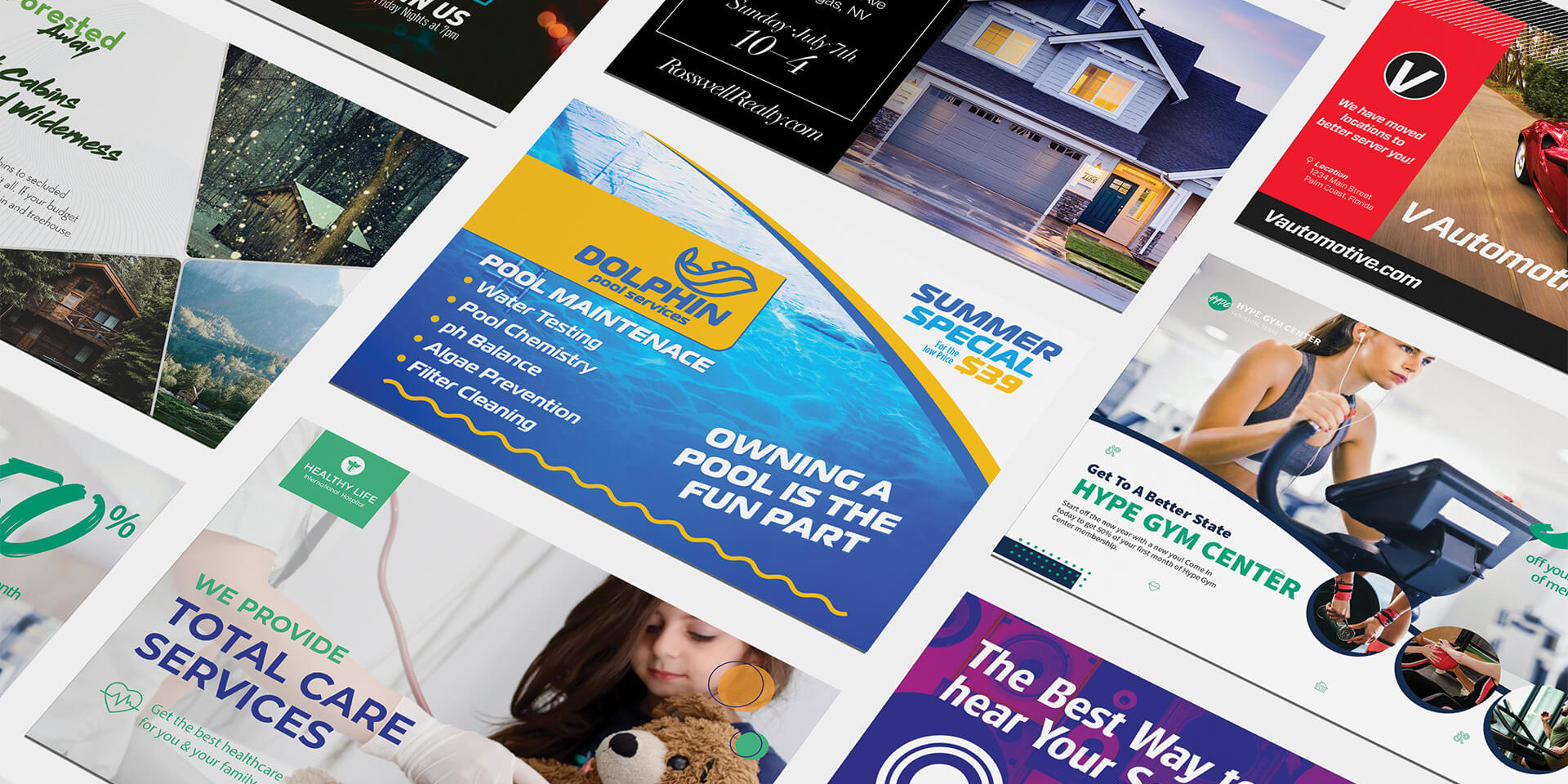Retargeting/Remarketing is quite possibly the best “secret” weapon that many direct marketers simply ignore or miss. Why do I think they miss it? Well, here are some common questions I’ve encountered in the last year or so.
“So…What is retargeting?”
“How are search retargeting and site retargeting different?”
“Why do some people call it retargeting, and others call it remarketing?”
“What are the different types of display retargeting?”
“How do you make good retargeting ads?”
And of course, my favorite… “Why do these stupid ads keep following me around online?!?”
Retargeting is one of the fastest growing, yet often misunderstood tactics utilized by direct marketing professionals. What most don’t realize is that retargeting is a blanket term – there are actually 6 (or more depending on who you ask) main types of retargeting methods. Knowing which retargeting method to use and when to use them can make a big difference in your marketing campaigns. We’ll start with the basics:
Site
Site is probably the most common type of retargeting. If you’re a Google Adwords user, you are probably familiar with the terminology “remarketing”. Site retargeting is a form of online marketing in which you target users who have previously visited your website with display ads across the internet. Those display ads can take the form of banner ads, text ads, dynamic ads, product ads, video ads, and more. Site retargeting allows you to create segments (ex. Visitors who looked at product/service X but didn’t convert) and use specific messaging to increase the likelihood that visitor will return and convert. Site retargeting is also great for upselling and referrals. One of the best parts is that you don’t need to work with a 3rd party vendor for site retargeting – anyone with a Google Adwords account can get up and running in no time.
Search
Search retargeting is when you target users with display ads who have previously searched for keywords, services, or products that are similar to yours, but haven’t yet visited your site. Search retargeting is probably the second most utilized form of retargeting. It’s important to use a different messaging strategy with search retargeting vs. site retargeting. I’ve seen marketers using the same ads for each method, and that’s a big no-no. Remember, the users probably don’t know you or your brand yet with search retargeting, so it’s important to use a broader message, as they will be starting higher up in the conversion funnel. Once a user visits your site from a search retargeting campaign, they can then be placed into a site retargeting campaign with completely different messaging and goals.
Social
Social retargeting is extremely similar to site retargeting, but instead of running your advertisements on display networks, you are using social media (Facebook, usually) to reach that audience. This tactic works well for gaining new fans, increasing page engagement, and of course, recapturing lost conversions. Create your own custom audiences to make the messaging more personal. For example, if you know a user has already purchased, you could run a Facebook retargeting offer campaign that gives a percentage off the next purchase in return for sharing with friends. Currently, working with a 3rd party vendor is usually the best option for social retargeting; however, running your campaigns directly through Facebook allows your ads to show on mobile, where a 3rd party cannot – so there are pros and cons to both approaches. You can be sure to expect much more from social retargeting in the coming months and years (and if you keep up with our blog, we’ll be sure to keep you informed).
CRM
One of the least known retargeting tactics, CRM retargeting, is when you use a mailing list (either email or even physical mail) to “match” the address to an online profile and display ads to that person. The match rate for CRM retargeting is anywhere between 20%-40% successful, depending on the provider you use and the list audience you are trying to target. There are numerous applications for CRM retargeting in direct marketing…but we’ll save that for another post.
Placing retargeting code in your email campaigns allows you to display advertisements to users who opened your email but didn’t click. This is extremely powerful, but also extremely controversial, as it’s a more intrusive form of retargeting. It works by placing a line of code in your email that cookies a user upon opening. It’s also important to note that placing retargeting code may have a negative effect on your delivery rates, so make sure to test and weigh the pros and cons. Email retargeting will not work with Google Remarketing code, so you’ll need to use a 3rd party vendor (see below for a list).
Contextual or Behavioral
Contextual retargeting is somewhat of a mix of site and search retargeting. However, instead of displaying advertisement to users who have visited your site, you are targeting users who have viewed or engaged with similar content (and/or with similar intent). Think of contextual retargeting as extremely focused display targeting based on user interests and actions. This tactic is great for capturing user interest in a broad category before diving into a hard sell of the brand. It’s often used at the top of the purchase funnel to drive users closer to the ultimate goal – conversion.
Examples of How to Use Retargeting in your Direct Marketing Campaigns:
While there are a virtually unlimited number of campaigns you can run with retargeting (depending on intent, industry, channels, etc.), we’ll try to get your wheels turning with some common use cases. Keep in mind that you don’t have to limit yourself to a single channel – you can capture a user with one retargeting method, and then convert them with another with multi-channel marketing. Without boring you with a long list, here are a few basic examples that most direct marketers (and even newbies) can apply to their business and marketing campaigns.
Popular Networks:
If you’ve read this far, you know I made reference to 3rd party retargeting vendors earlier in the article and promised to provide more details. There are pros and cons to using a 3rd party, and each vendor has its own strong points. Adroll is great for beginners but lacks some of the features of the previous one mentioned (though Retargeter has significant spend minimums). Google is great is you’re just getting started or running a relatively simple campaign. If you are serious about it, I suggest taking a look at each to determine which is best for you and your business or campaign. As always, feel free to use the comment section or contact form if you have questions or if you’d like some help choosing!
Most popular companies:
- Google Remarketing
- Retargeter
- Adroll
- Perfect Audience
- Chango
- Rocket Fuel
- Bing Remessaging
OK, so now that we’ve covered a lot of the basics, here are some actionable suggestions to ensure you are getting the most out of your retargeting campaigns.
- Understand and map out the various uses/goals for your campaigns ahead of time.
- Create extremely defined segments and audiences based on your goals.
- Make sure your audiences don’t overlap – too many ads and calls to action will hurt conversions.
- Create relevant messaging and visuals for your advertisements.
- Set ad impression caps – you don’t want to come off creepy or annoying.
- Filter out websites in your display networks that are under-performing or offensive to your users.
- Constantly test for each ad size, each goal, and for each audience.
- Measure and repeat until you’re a pro
- Once you’re a pro – try your hand at dynamic retargeting.
So that’s it in a nutshell. In short, there are unlimited possibilities for integrating it into your direct marketing campaigns. The use cases and potential methods will continue to expand as more and more ad networks (and social networks) open up to vendors and external software platforms. In the last two and a half years we’ve already gone from simple site retargeting to contextual targeting with dynamic ads – so there’s no telling what the future this may hold for marketers…I, for one, am excited.
contact us
Time to grow your business
Let's cut to the chase. We want to help you grow your business and we have the soil (paper), water (ink) and high-powered nitrogen fertilizer (brain power) to help you grow to new heights.
Related Blogs
August 1, 2024
6 Reasons Why Architects, Builders and Designers Should Form a Partnership with DME Delivers for Large Format Printing
Every selector has the potential to have unintended side effects by targeting unwanted elements or clashing with other selectors. More surprisingly, our selectors may even lose…
March 6, 2023
Combining Digital & Direct Marketing
Every selector has the potential to have unintended side effects by targeting unwanted elements or clashing with other selectors. More surprisingly, our selectors may even lose…
December 21, 2022
4 Tricks to Increase Yield
Every selector has the potential to have unintended side effects by targeting unwanted elements or clashing with other selectors. More surprisingly, our selectors may even lose…
December 19, 2022
3 Ways to Capitalize On Rolling Admission
Every selector has the potential to have unintended side effects by targeting unwanted elements or clashing with other selectors. More surprisingly, our selectors may even lose…



